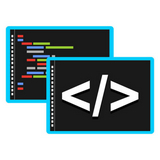
在go语言的并发编程实践中,开发者可能会遇到各种运行时错误。其中,panic: runtime error: invalid memory address or nil pointer dereference 是一种常见且致命的问题。这种错误通常不是由内存耗尽(out of memory, oom)引起的,而是程序尝试访问一个nil指针所指向的内存地址时发生的。在并发场景下,一个goroutine的panic如果没有被妥善处理,可能会导致整个应用程序崩溃。
当Go程序报告 panic: runtime error: invalid memory address or nil pointer dereference 时,意味着代码试图使用一个尚未被初始化或其值为nil的指针。例如,如果一个变量被声明为指针类型但没有分配内存,或者一个函数返回了nil作为其指针结果,随后代码又试图通过这个nil指针去访问其成员,就会触发此错误。
考虑一个简单的Go语言网络爬虫示例,它使用goroutine并发地抓取网页内容:
package main
import (
"fmt"
"io/ioutil"
"net/http"
"strconv"
)
func main() {
channel := make(chan []byte)
// 初始启动20个抓取goroutine
for i:=0; i < 20; i++ {
go fetcher(generateLink(), channel)
}
// 主循环持续生成链接、启动抓取和写入goroutine
for a:=0; ; a++ {
go writeToFile(strconv.Itoa(a), <-channel)
go fetcher(generateLink(), channel)
fmt.Println(strconv.Itoa(a))
}
}
func fetcher(url string, channel chan []byte) {
resp, err := http.Get(url)
if err != nil {
channel <- []byte("") // 错误时发送空字节切片
}
defer resp.Body.Close() // **潜在的错误源**
body, err := ioutil.ReadAll(resp.Body)
if err != nil {
channel <- []byte("")
return
}
channel <- body
}
func writeToFile(filename string, bytes []byte) {
// 忽略错误处理,实际应用中应处理
_ = ioutil.WriteFile(filename+".html", bytes, 0644)
}
func generateLink() string {
// 示例函数,实际应生成有效链接
return "http://example.com/" + strconv.Itoa(rand.Intn(1000))
}在上述fetcher函数中,错误发生在以下代码段:
resp, err := http.Get(url)
if err != nil {
channel <- []byte("")
}
defer resp.Body.Close() // 问题出在这里当http.Get(url)调用因网络问题、无效URL或其他HTTP错误而失败时,它会返回一个非nil的err,同时resp变量会是nil。defer resp.Body.Close()语句会在函数返回前执行,但它是在http.Get调用之后立即被调度。如果resp此时是nil,那么尝试访问resp.Body(即nil.Body)将立即触发nil指针解引用错误,导致程序panic。
为了避免上述问题,defer语句的放置位置至关重要。它应该在确保资源(如*http.Response)已被成功获取且不为nil之后再被调度。
以下是fetcher函数的修正版本:
func fetcher(url string, channel chan []byte) {
resp, err := http.Get(url)
if err != nil {
// 打印错误信息,便于调试
fmt.Printf("Error fetching URL %s: %v\n", url, err)
channel <- []byte("") // 错误时发送空字节切片或特定的错误指示
return // 发生错误时立即返回,避免后续操作
}
// 只有当resp不为nil时,才安全地调度resp.Body.Close()
defer resp.Body.Close()
body, err := ioutil.ReadAll(resp.Body)
if err != nil {
fmt.Printf("Error reading response body from %s: %v\n", url, err)
channel <- []byte("")
return
}
channel <- body
}通过将defer resp.Body.Close()放在if err != nil { ... return }块之后,我们确保了只有在http.Get成功返回一个非nil的*http.Response对象时,才会尝试关闭其Body。这种模式是Go语言中处理资源和错误的关键实践。
通过遵循这些最佳实践,开发者可以编写出更健壮、更可靠的Go并发应用程序,有效避免nil指针解引用等运行时错误。
以上就是Go并发编程中nil指针解引用错误解析与优雅处理:以网络爬虫为例的详细内容,更多请关注php中文网其它相关文章!

编程怎么学习?编程怎么入门?编程在哪学?编程怎么学才快?不用担心,这里为大家提供了编程速学教程(入门课程),有需要的小伙伴保存下载就能学习啦!

Copyright 2014-2025 https://www.php.cn/ All Rights Reserved | php.cn | 湘ICP备2023035733号